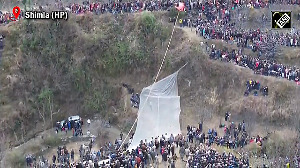A major earthquake hit Afghanistan, northern Pakistan and parts of India on Monday. The magnitude 7.5 earthquake was centred in the province of Badakhshan in the Hindu Kush mountain range in Afghanistan’s far north, and occurred at a depth of 130 miles. More than two minutes of sustained tremors were felt in the Pakistan’s capital Islamabad also the cities of Lahore, Faisalabad and the mountainous region of Chitral.
Two days later, Afghanistan and Pakistan are still trying to dig out people from the rubble, even as panic spreads across the region.

Residents search for belongings in the rubble of a house after it was damaged by an earthquake in Peshawar, Pakistan. Photograph: Fayaz Aziz/Reuters
1.
1) According to Pakistani officials, 258 people have died in Pakistan and more than 2,000 people have been injured in Monday’s earthquake which also damaged more than 4,000 homes.
Three people died on the Indian side of the disputed region of Kashmir. In Afghanistan, a health official confirmed the death of 78 and 466 wounded based on numbers reported by hospitals across the country.
2.
The United Nations Children’s Fund warned that children in earthquake-hit areas of Afghanistan and Pakistan are facing “further deadly threats as extreme conditions and insecurity cut off communities from aid”.
“UNICEF in Afghanistan and Pakistan are working with the national governments and are prepared to deliver life-saving supplies to tens of thousands of affected children and their families,” said UN spokesman Stephane Dujarric.

A man and his son try to remove the rubble from their house after the quake in Afghanistan. Photograph: Parwiz/Reuters
3.
The earthquake, with its epicentre close to the Badakhshan district of Jarm, damaged many of the few existing roads, officials said. The Pakistani town closest to the epicentre is Chitral.
Dropping aid by air will be the only way to reach many of the people in need, but those operations are not likely to start for many days until survey teams on foot return and report on the damage.
4.
Not only is navigating the mountainous terrain proving to be problematic, but Taliban terrorists in devastated areas in Afghanistan have complicated relief efforts.
In a statement, the Taliban has said that it has ordered its fighters “in the affected areas to lend their complete help to the victims and facilitate those giving charity to the needy.” However, it remained unclear whether aid workers would be able to operate safely, considering Afghanistan is one of the deadliest countries for them.

An army soldier carries an injured boy from helicopter, after he was rescued with others from an earthquake stricken area of Chitral, at the aviation base in Peshawar, Pakistan. Photograph: Fayaz Aziz/Reuters
5.
Mass burial ceremonies are being conducted in both the countries as officials warned that the death toll could spike as entire communities remain inaccessible amid freezing winter conditions.
6.
Several medium-intensity aftershocks of 3 and 3.5 magnitudes were reported in several cities and towns of Khyber Pakhtunkhwa, including the cities of Pakistan within two hours of the first earthquake.
7.
According to Director of Pakistan Meteorological Department Mushtaq Shah, mid-intensity aftershocks are expected to continue for the next two to three days in the affected areas. Low-intensity aftershocks are also likely to happen during the next 30 days, he added.









 © 2025 Rediff.com -
© 2025 Rediff.com -